

Saskatchewan's MRI wait-list doubled from 2015 to 2019. The waiting list for an MRI in Saskatchewan doubled from 2015 to 2019, despite a government initiative allowing patients to pay for a scan and extended MRI hours at hospitals.
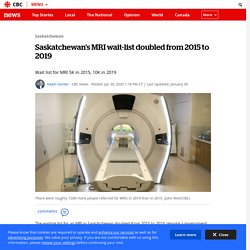
Ford government reveals health services to be delisted from OHIP. Ontario patients will have a harder time accessing house calls, urine pregnancy tests at doctors’ offices and ear-wax removals as the provincial government and physicians try to cut back on medically unnecessary procedures that would have cost the public system an estimated $83-million this year.
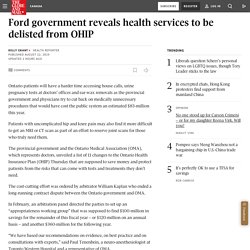
Patients with uncomplicated hip and knee pain may also find it more difficult to get an MRI or CT scan as part of an effort to reserve joint scans for those who truly need them. The provincial government and the Ontario Medical Association (OMA), which represents doctors, unveiled a list of 11 changes to the Ontario Health Insurance Plan (OHIP) Thursday that are supposed to save money and protect patients from the risks that can come with tests and treatments they don’t need. The cost-cutting effort was ordered by arbitrator William Kaplan who ended a long-running contract dispute between the Ontario government and OMA. Dr. w26038. What the Experts Want Us to Know About Public Health. The following originally appeared on The Upshot (copyright 2018, The New York Times Company) and is coauthored by Austin Frakt and Aaron Carroll.
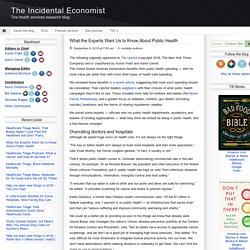
The United States receives tremendous benefits from public health spending — with far more value per dollar than with most other types of health care spending. Preventive Care Saves Money? Sorry, It's Too Good to Be True. The following originally appeared on The Upshot (copyright 2018, The New York Times Company).

The idea that spending more on preventive care will reduce overall health care spending is widely believed and often promoted as a reason to support reform. It’s thought that too many people with chronic illnesses wait until they are truly ill before seeking care, often in emergency rooms, where it costs more. It should follow then that treating diseases earlier, or screening for them before they become more serious, would wind up saving money in the long run. Unfortunately, almost none of this is true. Emergency room care is not free, after all. Wellness programs, based on the idea that we can save money on health care by giving people incentives to be healthy, don’t actually work this way.
A Tale of Two Doctors - Structural Inequalities and the Culture of Medicine. Value based healthcare. Reducing unwarranted variation to maximise the value of healthcare for populations How can the gap between need and demand on the one hand and resources on the other be closed or even narrowed?
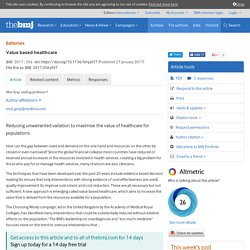
Since the global financial collapse most countries have reduced or reversed annual increases in the resources invested in health services, creating a big problem for those who pay for or manage health services, many of whom are also clinicians. The techniques that have been developed over the past 20 years include evidence based decision making (to ensure that only interventions with strong evidence of cost effectiveness are used), quality improvement (to improve outcomes), and cost reduction. Design Health Insurance for Overtreatment by Wei HU. Jamanetwork. Importance No guidelines exist currently for guideline panels and others considering changes to disease definitions.

Panels frequently widen disease definitions, increasing the proportion of the population labeled as unwell and potentially causing harm to patients. We set out to develop a checklist of issues, with guidance, for panels to consider prior to modifying a disease definition. Observations We assembled a multidisciplinary, multicontinent working group of 13 members, including members from the Guidelines International Network, Grading of Recommendations Assessment, Development and Evaluation working group, and the World Health Organisation. We used a 5-step process to develop the checklist: (1) a literature review of issues, (2) a draft outline document, (3) a Delphi process of feedback on the list of issues, (4) a 1-day face-to-face meeting, and (5) further refinement of the checklist.
The literature review identified 12 potential issues. 1-s2.0-S2213076416301671-main. Association of Primary Care Practice Location and Ownership With the Provision of Low-Value Care in the United States. Question What is the influence of practice location and ownership on the provision of low-value care?

Findings In this nationally representative sample of primary care visits, hospital-based outpatient practices used more low-value computed tomography and magnetic resonance imaging, radiographs, and specialty referrals for common conditions than community-based office practices, particularly during hospital-based visits with someone other than the patient’s primary care provider. Hospital-owned community-based practices made more specialty referrals than physician-owned community-based practices but were otherwise similar. Welcome. Two ways to identify clinical variation. There are many opportunities to reduce care variation in hospitals today—but how should you prioritize those opportunities?
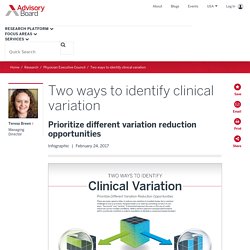
You should start by examining variation in two ways: "horizontal" and "vertical. " A horizontal approach focuses on the use of costly resources across multiple conditions, while a vertical approach analyzes performance within a particular condition or patient population to develop a consensus-based standard. Our infographic gives an example of each approach and explains the challenges of a horizontal approach versus the benefits of a vertical one.
Download the infographic. From Triple to Quadruple Aim: Care of the Patient Requires Care of the Provider. + Author Affiliations CORRESPONDING AUTHOR: Thomas Bodenheimer, MD, Center for Excellence in Primary Care, Department of Family and Community Medicine, University of California at San Francisco, Bldg 80-83, SF General Hospital, 995 Potrero Ave.

San Francisco, CA 94110, TBodenheimer@fcm.ucsf.edu or tbodie@earthlink.net Abstract The Triple Aim—enhancing patient experience, improving population health, and reducing costs—is widely accepted as a compass to optimize health system performance. Why The Best Hospitals Are Managed by Doctors. Healthcare has become extraordinarily complex — the balance of quality against cost, and of technology against humanity, are placing ever-increasing demands on clinicians.
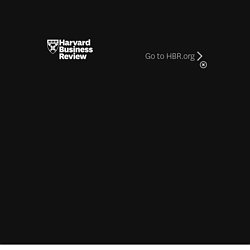
These challenges require extraordinary leaders. Doctors were once viewed as ill-prepared for leadership roles because their selection and training led them to become “heroic lone healers.” But this is changing. Implementation and de-implementation: two sides of the same coin? BMJ Quality & Safetyqualitysafety.bmj.com doi:10.1136/bmjqs-2016-005473 Special article + Author Affiliations Correspondence to Dr Leti van Bodegom-Vos, Department of Medical Decision Making, Leiden University Medical Center, PO Box 9600, Leiden 2300 RC, The Netherlands; l.vanbodegom-vos@lumc.nl Received 8 March 2016 Revised 10 July 2016 Accepted 13 July 2016 Published Online First 10 August 2016 Avoiding low value care received increasing attention in many countries, as with the Choosing Wisely campaign and other initiatives to abandon care that wastes resources or delivers no benefit to patients.
Assessing strategies for quality improvement. Evidence-based de-implementation for contradicted, unproven, and aspiring healthcare practices. Divesting from ineffective and harmful medical practices has the potential to improve outcomes for patients, and mitigate the unsustainable rise in healthcare costs. Abandonment (de-implementation) of medical interventions may depend on multiple factors. Empirical evidence from well-designed studies should count, but other considerations such as inertia, financial and professional conflicts, cultural and societal values, knowledge brokering, and lobbying may also be very important eventually.
Cedars-Sinai uses electronic records to spur improved, lower cost care. Last week, I told you about Sutter Health's efforts to orient its doctors toward more cost-conscious, high-quality care. As you might remember, the Northern California health system is gathering doctors and, using data culled from electronic health records, comparing individual doctors' practice patterns. Unwarranted variations in healthcare delivery: implications for academic medical centres. John E Wennberg (john.Wennberg@Dartmouth.edu), directorAuthor affiliations Everyday clinical practice is characterised by wide variations that cannot be explained by illness severity or patient preference. Professor Wennberg examines the causes for these variations and suggests ways to remedy the situation Academic medicine has had only limited success in improving the scientific basis of everyday clinical practice, even within the walls of its own hospitals.
The Value of Low-Value Lists. An international groundswell of activity is seeking to identify and reduce the use of health care services that provide little or no benefit—whether through overuse or misuse. Health Systems Evidence. Choosing wisely: prevalence and correlates of low-value health care services in the United States. “Nudge” in the clinical consultation – an acceptable form of medical paternalism? Radiation From CT Scans May Raise Cancer Risk. BehaviouralInsightsInHealthCare. Great communication in healthcare can save lives. GP quality and outcomes framework indicators focus on the wrong issues.
In the last few months the government has been engaged in lengthy discussions with the British Medical Association on how best to introduce further reforms within general practice. Giving Doctors Grades. Achieving Value in Primary Care: The Primary Care Value Model. Should primary care guidelines be written by family physicians? G. The importance of being different. Paying doctors bonuses for better health outcomes makes sense in theory. But it doesn't work. Doctors Be Forewarned: Eliminate Wasteful Medical Practices Or Expect A Pay Cut. Paying more wisely: effects of payment reforms on evidence-based clinical decision-making, Journal of Comparative Effectiveness Research, Future Medicine. We really want to pay for quality, but it’s so darn hard.
Paying for quality, not quantity is getting to be almost cliche. Recently, the Obama administration doubled down, however, announcing ambitious targets for Medicare payments to be “tied to” quality in the future. Unfortunately, the evidence behind such programs working continues to elude us.